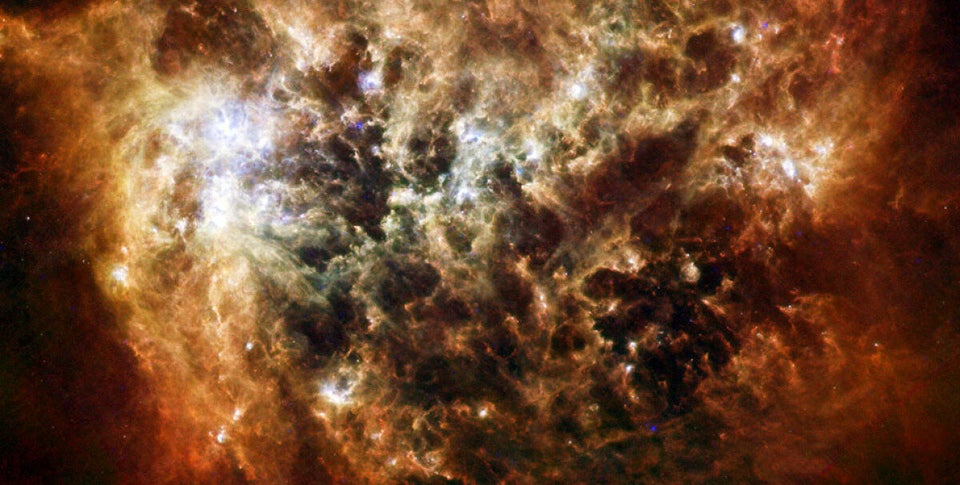Ask any Star Trek aficionado about space and they will quickly tell you that it is the final frontier for humanity. For thousands of years, we have been stuck on this planet looking up at the stars wondering what might be...out there. In the futuristic series, a team of intergalactic travelers span the universe seeking out new life and new civilizations in an effort to boldly go where no one has gone before.
I imagine they brought a microscope.
Of all the possible extraterrestrial entities, microbes are considered to be the most numerous and prevalent, just as they are here on Earth. While humans only discovered microbes a few hundred years ago by Antoine van Leeuwenhoek, they have been around since the dawn of the universe. In 1998, the fascinating science of astrobiology was developed in the hopes of understanding the past, present, and future of life, the origins of life, and the search of extraterrestrials, including germs. Their efforts have had little success to date but the current mission to Mars by the Curiosity Rover offers hopes to find the first of no doubt signs of microbial life on another planet.
While the mission to find alien microbial life is just a burgeoning activity in the grand scale of extraterrestrial research, the fact that Earthly germs can survive in space has been believed for well over 40 years. During the second mission to the moon in 1969, Apollo 12, the crew brought back a camera that had been sent some two and a half years earlier. When they returned, the camera underwent extensive testing including microbiological analysis. Much to their surprise, they found a colony of earthly bacteria; apparently the microbes had survived the inhospitable lunar environment.
Though the bacteria were later revealed to be a contamination of the camera after it had returned to Earth, an interesting direction in microbiological adventures emerged. For decades, researchers sent microbes into space and analyzed them after their descent back to Earth. Invariably, the bacteria survived -- some better than others -- suggesting germs were not only capable of living in space, but also, should they be pathogenic, could make life an unending hell.
BLOG CONTINUES BELOW SLIDESHOW
In 2006, NASA sent up the pathogenic foodborne bacteria Salmonella typhimurium in the space shuttle Atlantis in the hopes of learning what space travel would do to the bacterium. It survived, that wasn't a big surprise, but it also had evolved, becoming even more lethal in mice than the same bacteria left on Earth. The mutation was further studied and found to be due to life in microgravity.
The results were thrilling for astrobiologists who had the first evidence of microbial evolution in space. For those responsible for the health and safety of astronauts, however, these results meant one more headache in the already contentious issue of health in space. The immune system is already compromised during space travel, medications are less potent and even vaccines may not be as effective. The body is literally a target for any pathogen wishing to hitch a ride and cause havoc. For this reason, astronauts are put through a rigorous health check to make sure they are free of illness. They are even put in quarantine before a launch to be sure they are completely safe.
In response to these problems, earlier this month, Dr. Leonard Mermel at Brown University published a comprehensive look at the impact of germs and space travel. Mermel, a leader in the prevention of infections in hospitals, suggests microbes definitely have the upper edge in space and without proper respect, can become an even greater enemy than any alien species found on another planet.
He has compiled an extensive list of countermeasures required to prevent infection and spread on any vessel over a long period of time. Prior to a launch, astronauts must undergo a significant vaccination schedule; a full body screen for any possible pathogens including those on the body, in the nose and especially in the feces; and a rigorous infection control program to ensure astronauts understand the risk of infection spread.
Once they are away from Earth, they should always be aware of any symptoms and begin to wear masks and other clothing should infection arise. Astronauts also need to be sure to keep their good germs up with the use of probiotics and keep the bad germs away with regular toothbrushing and mouthwashing. But the most brilliant aspect of his suggestion comes directly from his work in the hospital where hand hygiene is one of the most useful means to prevent infection.
According to Mermel, a sensor should be put into the washroom to ensure that once the facility is used, hands are washed accordingly. While his idea may seem to come from The Far Side the reason is incredibly sound; up to 80 per cent of infections are spread through hands.
The work of astrobiologists and terrestrial microbiologists such as Mermel to keep astronauts safe is commendable as future missions will no doubt be safer for humans as they leave earth in search of alien lands. Unfortunately, that may not help them when they arrive at their destination. Without any evidence of extraterrestrial life, we can't be sure what's out there or what threat may come from interaction or contact with them. We can only hope that the earthly measures to keep galactic travelers safe will be effective against any microbe that might be out there.
Of course they can also eschew red shirts though I'm sure that is already a given.
